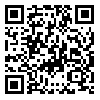Volume 19, Issue 2 (2023)
ioh 2023, 19(2): 500-519 |
Back to browse issues page
Ethics code: IR.TUMS.SPH.REC.1400.151
Download citation:
BibTeX | RIS | EndNote | Medlars | ProCite | Reference Manager | RefWorks
Send citation to:



BibTeX | RIS | EndNote | Medlars | ProCite | Reference Manager | RefWorks
Send citation to:
Hokmabadi R, Zarei E, karimi A. Risk assessment using failure modes and effects analysis on the basis of SWARA-RE-VIKOR fuzzy multi-criteria decision-making methods: A case study of the city gate gas pressure reduction station. ioh 2023; 19 (2) : 33
URL: http://ioh.iums.ac.ir/article-1-3405-en.html
URL: http://ioh.iums.ac.ir/article-1-3405-en.html
Department of Occupational Health Engineering, Faculty of Health, Tehran University of Medical Sciences, Tehran, Iran. , ali.karimi57@gmail.com
Abstract: (2231 Views)
Introduction: Failure modes and effects analysis (FMEA) is a risk-management method used in industries promote the safety of processes and systems. Fuzzy multi-criteria decision methods are methods that choose the best option from several different criteria. The purpose of this article is to assess the risk using the FMEA method based on stepwise weight assessment ratio analysis (SWARA) - relative-entropy (RE) - VIseKriterijumska Optimizacija I Kompromisno Resenje (VIKOR) fuzzy multi-criteria decision-making (MCDM) methods in an urban gateway gas pressure reduction station.
Methods: In this descriptive-analytical study, SWARA fuzzy methods were used to determine the weight of risk factors, RE was used to weigh team members, and VIKOR was employed to rank failure modes, such that these modes were identified and evaluated based on the opinion of four experts with at least five years of experience. At the end, the sensitivity and comparative analysis of the proposed approach was performed.
Results: Six failure modes were identified in the main equipment of Darveza Shahri gas pressure reduction station. The failure mode of the regulator, filter, and the odorize system ranked first, second, and third in terms of risk priority. The risk intensity index had a higher priority than other indices. Twelve sensitivity analysis tests were performed, and the failure mode of the regulator and the heater were the least and the most sensitive, respectively. Furthermore, the results of the sensitivity and comparative analysis supported the validity of the proposed approach.
Conclusions: According to the results of SWARA, RE and VIKOR fuzzy methods, the proposed approach eliminates the problem of the same weights of risk factors, the uncertainty in the data (experts' opinions) and the prioritization of failure modes, compared to the traditional FMEA method. It can also prioritize risks more effectively.
Methods: In this descriptive-analytical study, SWARA fuzzy methods were used to determine the weight of risk factors, RE was used to weigh team members, and VIKOR was employed to rank failure modes, such that these modes were identified and evaluated based on the opinion of four experts with at least five years of experience. At the end, the sensitivity and comparative analysis of the proposed approach was performed.
Results: Six failure modes were identified in the main equipment of Darveza Shahri gas pressure reduction station. The failure mode of the regulator, filter, and the odorize system ranked first, second, and third in terms of risk priority. The risk intensity index had a higher priority than other indices. Twelve sensitivity analysis tests were performed, and the failure mode of the regulator and the heater were the least and the most sensitive, respectively. Furthermore, the results of the sensitivity and comparative analysis supported the validity of the proposed approach.
Conclusions: According to the results of SWARA, RE and VIKOR fuzzy methods, the proposed approach eliminates the problem of the same weights of risk factors, the uncertainty in the data (experts' opinions) and the prioritization of failure modes, compared to the traditional FMEA method. It can also prioritize risks more effectively.
Article number: 33
Keywords: Multi-criteria decision making (MCDM), fuzzy set, SWARA method, entropy method, VIKOR method, FMEA method
Type of Study: Research |
Subject:
Assessment and risk management
Received: 2022/06/1 | Accepted: 2022/12/29 | Published: 2023/04/4
Received: 2022/06/1 | Accepted: 2022/12/29 | Published: 2023/04/4
Send email to the article author
| Rights and permissions | |
 |
This work is licensed under a Creative Commons Attribution-NonCommercial 4.0 International License. |







